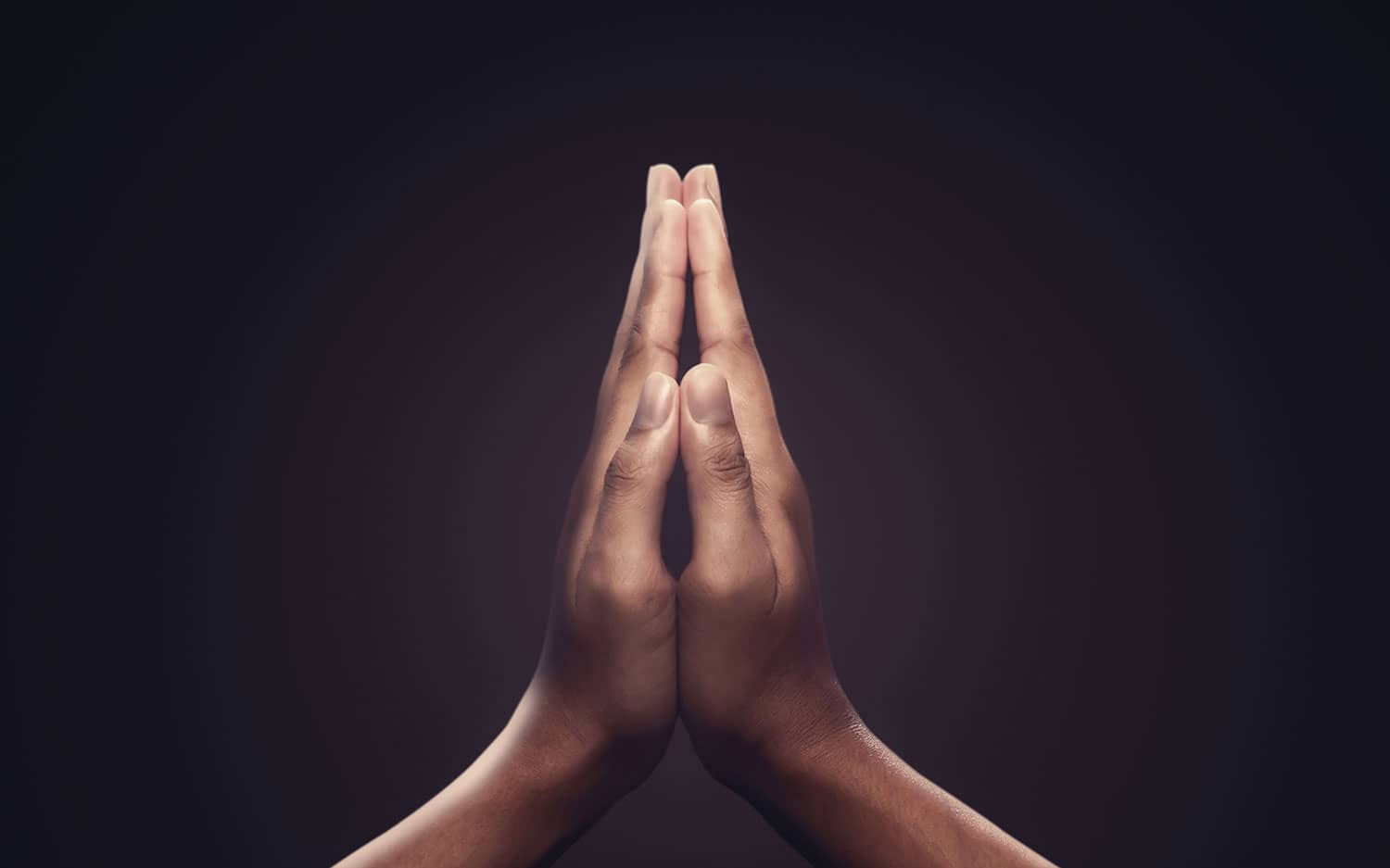
Meditation coach Emma Morrison is the go-to person for those…
Namaste has become very popular in Western culture. But do you actually know what it means?
The term is associated with Hinduism and yoga. It comes from Sanskrit and “bowing to you” or “I bow to you.”
Namaste and namaskar are both used as greetings. They both come from Sanskrit.
Sanskrit is an ancient, classical literary language of Hinduism. Today, it serves as a learned language and lingua franca among scholars. The phrase namaste is formed from “namah” and “te.” “Namah” means “bow, obeisance, adoration.” “Te” means “to you.”
But namaskar is a little bit different.
Namaskar is the combination of “namah” and “kar.” “Kar” is derived from the verb “kri” which means “to do.”
So “namaskar” means “I do the act of saluting or bowing with respect.”
Namaskar and namaste refer to the same expression of respect. It can be used interchangeably. Both are Indian ways of greeting people and showing respect. It is also accompanied by holding one’s palms upright in front of their chest.
What Does Namaskar Mean?

Namaskar is a respectful greeting or a parting salutation. It is used in Hindu and yogic traditions. The base word “namaha” also means “not me.” It refers to bowing in reverence. Sometimes, namaskar is considered a synonym for namaste. But there are subtle differences in their meanings.
Namaste is more popular. It is an informal term and translates as “salutations to you” or “I bow to you with respect.”
Namaskar is more formal. It translates as “I pay my salutations.”
Spiritually, there is another difference between the two.
In namaskar, the object of the greeting is the supreme consciousness of the other person. Namaste is used to bow to a divine entity.
On a spiritual level, the “you” to whom you salute is directed to the divine. The meanings of the words vary by region and tradition.
In this way, namaskar merges the divine with the earthly. It takes namaste just another step further by acknowledging the sacred nature of those around us.
The Word Broken Down

Let’s break down the word a little bit further.
“Nam” means “to bow to.”
“As” means “to be” or “to exist.”
“Kar” means “doing” or “one who does.
Together, namaskar translates as “I do the act of bowing with reverence.”
By explaining one’s act of bowing, they are further extending their reverence. They are explaining that they recognize the sacred nature of another. They are doing something to honor them. They are not just honoring them. They are doing something about it.
The Big Idea Behind Namaskar

Great yogic sages once defined realization. They describe it as seeing and experiencing the true nature of the universe. This realization allows us to know that everything in existence is Universal Consciousness. It is just in its manifested form.
This means that you, me, the trees, and the rocks are all one. Some things are easier in theory than in practice. But namaskar reminds us of our connectedness.
More importantly, namaskar reminds us to slow down. It brings us to a centered and grounded place. Here, we may recognize our oneness with our surroundings. We may acknowledge the divine nature in everything as well as in ourselves.
Parts of a Namaskar Greeting

A Namaskar greeting has three or four parts.
1) Verbally say “Namaste.”
“Namaste” generally means “hello.” The root of the Sanskrit word “namaskar” is “nama.” This means “glory to” or “reverence to.” “Kar” is the same as it is in karma. Both karma and namaskar indicate action.
Namaskar is the act of showing reverence to another person. It also acts as an acknowledgement of what is sacred in that person.
2) Bring your hands together in front of your heart.
The anjali mudra places the hands together in front of the heart. Anjali is a powerful gesture. When one places their hands together, they are creating a union of opposites. Anjali is bringing together the right and the left, the good and the bad, us and them. It recognizes the inherent oneness of everything.
3) Bow the head towards the heart.
The mind is good at seeing differences. For practical matters, we must rely heavily on this skill. But highest wisdom does not lie in our ability to divide.
Part of namaskar is bowing the head to the heart. This consciously sets aside differences of the mind. It allows us and others to experience the unity of being.
4) Reflect on the significance of the gesture.
Notice how the meaning of your gesture makes you feel. What does it bring up for you? How does it make you feel more connected?
So often with greetings, we become too familiar with colloquial language. But namaste reminds us to look inward as we greet others. Greeting others is a way of acknowledging them. And acknowledging them with namaste goes just a step deeper.
Experiencing Unity

Most of our daily lives involve setting ourselves apart from each other. We view ourselves differently from our neighbors, families, and friends. We think about who is right and who is wrong. We consider what choice is better over the other. And we place value judgments on actions, character traits, and livelihoods.
But namaskar is an opportunity to step back from difference.
With our hands together, we engage in the gift of tuning in. We tune in to what is the same in each of us. We bow our heads towards that gift. We set aside conceptions and judgments.
We are all one. We are all composed of the same divine consciousness. The conscious act of namaskar creates this feeling of respect and appreciation. And we cultivate this feeling when we greet each other. It also fosters that feeling of oneness inside of us.
Final Thoughts

Use namaskar as an exercise for yourself. Use it to challenge yourself to see our similarities rather than our differences. Make a conscious choice to engage in the act of unity.
Even if it is a single word, so many different meanings reside within it.
Take the opportunity to ruminate on what namaskar can do for you.
What's Your Reaction?
Meditation coach Emma Morrison is the go-to person for those living in Salt Lake City, Utah, who need to release stress and tension or simply dive deeper into their meditation practice. In her writing, you’ll receive useful information on how to live a more fulfilling life.














